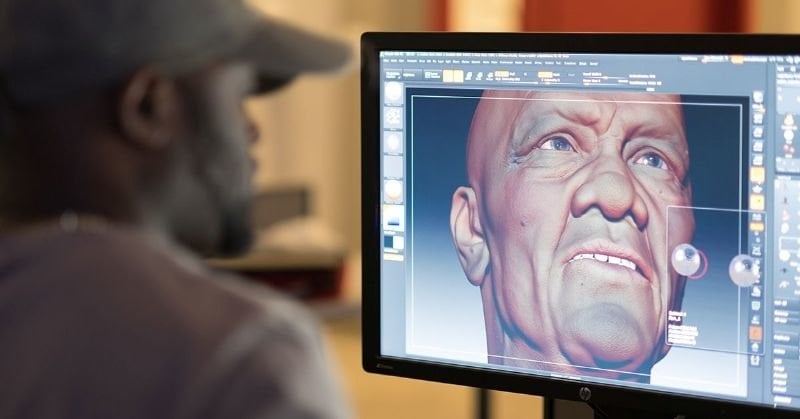Fashion design is an exciting and creative field, and with the rise of digital tools, it has never been easier to start learning and creating stunning garments. This beginner's guide will introduce you to the essential tools, skills, and resources to get started with fashion design.

What is Fashion Design?
At its core, fashion design is about creatively expressing ideas through clothing and accessories. It involves combining aesthetics, functionality, and trends to create garments that represent artistic concepts while being wearable. Fashion designers create everything from conceptual sketches and technical patterns to final garments, blending art, craftsmanship, and market trends.
Essential Tools for Fashion Design Beginners
As a beginner, understanding the tools available to you is key. Here's a breakdown of the most popular and beginner-friendly fashion design tools that will help you get started:
1. 2D Design Tools
These tools are essential for creating digital sketches, technical drawings, and layouts.
-
Adobe Illustrator
Best for: Creating vector-based designs, fashion illustrations, and flat garment sketches.
Why it's great for beginners: Illustrator is widely used in fashion design. It's vector-based, meaning your designs can be resized without losing quality. Beginners can start with simple shapes and gradually move on to more complex fashion illustrations. With many online tutorials, you can easily learn the basics. -
Canva
Best for: Simple design projects like lookbooks, mood boards, and basic fashion graphics.
Why it's great for beginners: Canva is a free, easy-to-use tool with a drag-and-drop interface. It offers templates for various design needs, making it a great starting point for beginners in fashion design. You can also access a vast library of fonts, images, and illustrations to bring your designs to life. -
Inkscape
Best for: Free vector graphic design.
Why it's great for beginners: Inkscape is a free alternative to Adobe Illustrator and offers many of the same tools for creating vector illustrations. It's ideal for those just starting and is perfect for experimenting with garment designs without spending money.
2. 3D Design Tools
If you want to explore fashion design further and simulate garments in 3D, these tools are essential.
-
Blender
Best for: 3D modeling, animation, and garment visualization.
Why it's great for beginners: Blender is an open-source, free tool that allows you to create 3D garments and visualize how they'll look in real life. Although it has a steeper learning curve, many beginner tutorials are available to help you get started. -
Tinkercad
Best for: Simple 3D designs and prototyping.
Why it's great for beginners: Tinkercad is a web-based tool that allows users to create 3D models. It's beginner-friendly with a simple interface, making it ideal for newcomers who want to start designing 3D clothing, accessories, or fashion prototypes. -
CLO 3D
Best for: Fashion design and virtual garment simulation.
Why it's great for beginners: CLO 3D is specifically made for fashion designers. It allows you to create realistic virtual garments, simulate how fabrics behave, and see how designs fit a virtual model. It's easy to use, even for beginners, and has many tutorials to help you start creating 3D clothing designs. CLO 3D is one of the best tools for AI clothing design and 3D clothing modeling, providing an excellent introduction for beginners who want to move into the realm of virtual clothing creation. -
Marvelous Designer
Best for: Fashion design with 3D garment simulation.
Why it's great for beginners: Similar to CLO 3D, Marvelous Designer helps you create 3D clothing models and virtual fashion designs. It's designed to help users see how fabrics move and drape on a virtual body, making it ideal for fashion design students and professionals alike.
3. AI-powered Tools
AI tools are revolutionizing the design process, offering automation and creative suggestions that can speed up workflows.
-
Adobe Sensei
Best for: AI-powered design features in fashion software.
Why it's great for beginners: Adobe Sensei is integrated into Adobe Creative Cloud apps like Photoshop and Illustrator. It helps automate tasks such as selecting objects, adjusting colors, and removing backgrounds. This AI-powered assistance saves time and allows beginners to focus more on the creative side of design. -
Designhill AI Logo Maker
Best for: Creating fashion brand logos.
Why it's great for beginners: If you're designing a logo for your fashion brand, this AI tool helps you generate logo ideas quickly. It's user-friendly and offers professional results, even if you're new to graphic design. -
Artbreeder
Best for: Generating creative visuals with AI.
Why it's great for beginners: Artbreeder uses AI to combine and manipulate images. You can adjust different parameters like color, style, and texture, which can help you generate new and unique fashion concepts. -
AI Dress Design Tools
Best for: Generating fashion design ideas and clothing templates.
Why it's great for beginners: AI-powered dress design tools allow you to create dress concepts quickly. You can experiment with different styles, patterns, and colors using AI-generated suggestions, helping to inspire your design journey.
Resources for Learning Fashion Design
Fashion design is a multi-disciplinary field that requires creativity, technical expertise, and industry knowledge. Thankfully, there are many online platforms, books, and courses available to help you master the various aspects of fashion design.
1. Fashion Design Courses for Beginners
-
Fashion Design Courses (Coursera, Udemy, Skillshare)
Best for: Learning the fundamentals of fashion design, sketching, pattern making, and fabric selection.
Why it's great for beginners: Platforms like Coursera and Udemy offer fashion design courses for beginners that cover everything from the basics of sketching and sewing to advanced topics like 3D garment simulation and virtual fashion creation. -
Sewing Online Courses
Best for: Learning sewing techniques and garment construction.
Why it's great for beginners: Online platforms like Craftsy and Skillshare offer sewing courses, where you can learn to sew your own designs. You’ll get hands-on experience in creating clothing and gain a deeper understanding of the garment construction process.
2. Books and Printed Resources
-
"Fashion Design: The Complete Guide" by John Hopkins
Best for: A well-rounded introduction to fashion design.
Why it’s great for beginners: This book covers everything from the basics of design to garment construction, fabric selection, and sketching techniques. It's a great starting point for beginners. -
"The Fashion Sketchbook" by Bina Abling
Best for: Fashion sketching techniques.
Why it's great for beginners: This book provides step-by-step instructions for illustrating fashion designs, helping you develop your own unique drawing style. -
"Patternmaking for Fashion Design" by Helen Joseph-Armstrong
Best for: Learning pattern making and garment construction.
Why it's great for beginners: If you're interested in the technical aspects of fashion design, this book teaches how to create patterns from scratch, an essential skill for designers who want to turn their sketches into real garments.
3. YouTube Channels for Fashion Design
-
Fashion Schooling
Best for: Fashion illustration, sketching, and design tutorials.
Why it's great for beginners: Fashion Schooling's YouTube channel provides detailed tutorials on how to draw fashion figures, design garments, and improve fashion illustration techniques. -
Justine Leconte
Best for: Fashion design insights, fabric selection, and branding tips.
Why it's great for beginners: Justine Leconte provides valuable advice on design techniques, the fashion industry, and building a fashion brand. Her clear explanations are perfect for beginners. -
The Fashion Archive
Best for: Fashion history and trend inspiration.
Why it's great for beginners: Learning about fashion history is essential for every designer. The Fashion Archive covers iconic collections, designers, and the evolution of trends, which can help inspire your own designs.
Essential Skills You Should Learn in Fashion Design
Fashion design requires a broad skill set. Here are some key skills you should focus on as you start your fashion design journey:
1. Fashion Illustration and Sketching
-
Why it's important: Fashion illustration is crucial for visually communicating your ideas. Whether you're sketching by hand or using digital tools, being able to represent your designs clearly is essential.
-
How to learn it: Start with basic garment sketches, practice fashion figures (croquis), and explore different sketching tools like pencils, markers, and digital tablets.
2. Textile and Fabric Knowledge
-
Why it's important: Understanding fabric properties helps you choose the right materials for your designs, impacting their look, feel, and functionality.
-
How to learn it: Study textiles through online courses, attend workshops, and explore fabric swatches to understand the characteristics of different materials.
3. Pattern Making and Garment Construction
-
Why it’s important: Knowing how to create patterns and construct garments ensures that your designs can be turned into real clothing.
-
How to learn it: Take pattern-making courses, read books like Patternmaking for Fashion Design, and practice constructing garments using various materials.
4. Fashion CAD (Computer-Aided Design)
-
Why it's important: CAD tools help you create digital garments and patterns, streamlining the design process.
-
How to learn it: Familiarize yourself with software like Adobe Illustrator, CLO 3D, and TUKAcad through online tutorials and courses.
5. Color Theory and Textile Dyeing
-
Why it's important: Color affects the mood and appeal of your designs. Understanding color theory helps you create visually harmonious collections.
-
How to learn it: Study color theory and experiment with dyeing fabrics. Online resources and workshops on textile dyeing will help you understand how to work with colors practically.
6. Trend Forecasting and Market Research
-
Why it’s important: Staying ahead of trends is essential for creating relevant designs. Market research helps you understand consumer preferences and upcoming fashion trends.
-
How to learn it: Subscribe to trend forecasting platforms, read fashion blogs, and attend fashion shows to stay updated on the latest trends.
7. Fashion Branding and Marketing
-
Why it's important: Understanding branding and marketing is essential if you want to build a successful fashion career, whether you work for a company or launch your own brand.
-
How to learn it: Study courses on branding, social media marketing, and e-commerce. Building an online portfolio and gaining exposure on platforms like Instagram will also help you establish your brand.
Career Development After Learning Fashion Design
Once you've developed your skills, various career paths in fashion design await you:
1. Fashion Illustrator
Create digital and hand-drawn sketches to represent clothing designs, working alongside fashion designers.
2. Textile and Pattern Designer
Design fabric prints and patterns, often for specific clothing collections, or as a freelance designer for manufacturers.
3. Fashion CAD Designer
Use software to create digital garments and visualize how clothing will look in real life.
4. Fashion Graphic Designer
Work on branding, promotional materials, and digital lookbooks for fashion brands, combining design skills with marketing knowledge.
FAQ Section
Q1: Do I need a formal degree to become a fashion designer?
A: No, many successful fashion designers have built their careers through self-study, online courses, and hands-on practice. A strong portfolio is often more important than a degree.
Q2: What software should I learn as a beginner in fashion design?
A: Start with user-friendly tools like Canva and Inkscape. As you progress, learn Adobe Illustrator for vector designs and CLO 3D for garment simulation.
Q3: How long does it take to become proficient in fashion design?
A: It can take anywhere from 6 months to a year to become comfortable with the basics. Advanced techniques may take longer to master.
Q4: How can I build a portfolio as a beginner?
A: Create personal projects, such as designing logos or digital fashion illustrations. Use platforms like Instagram and Behance to showcase your work.
Conclusion: Keep Practicing and Experimenting
Fashion design is an evolving field that improves with practice and experimentation. Start small with simple projects and gradually take on more complex designs as you refine your skills. Keep learning, stay inspired, and enjoy the process of creating beautiful fashion designs!




